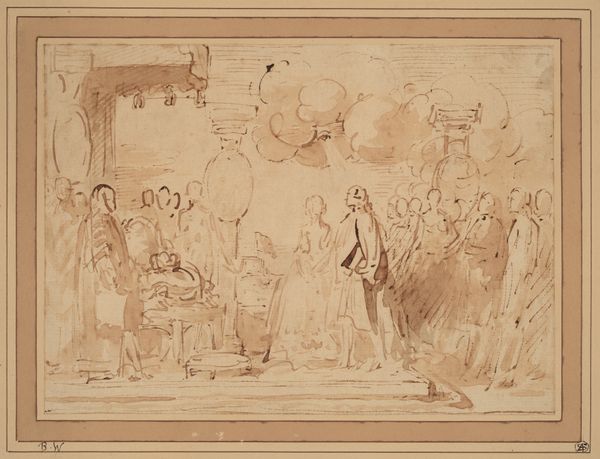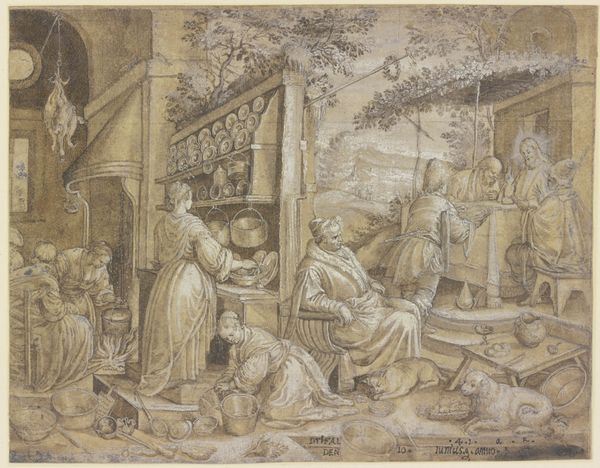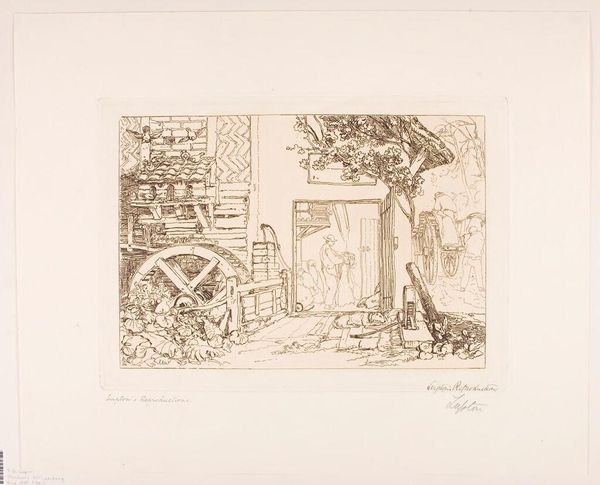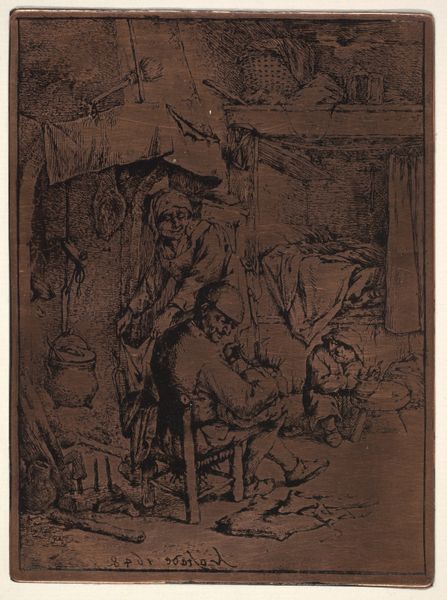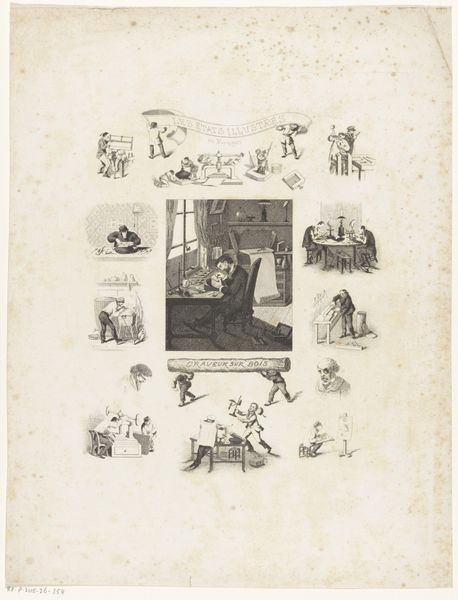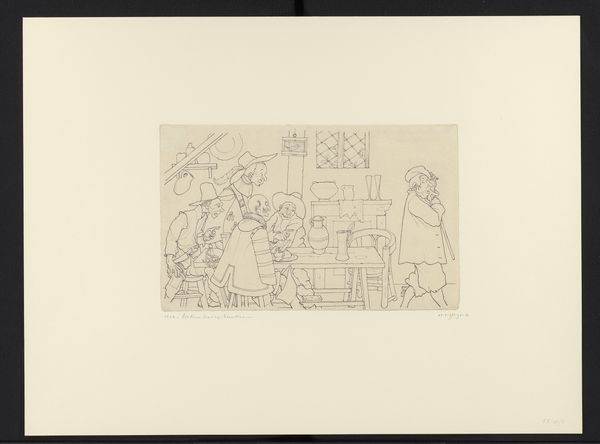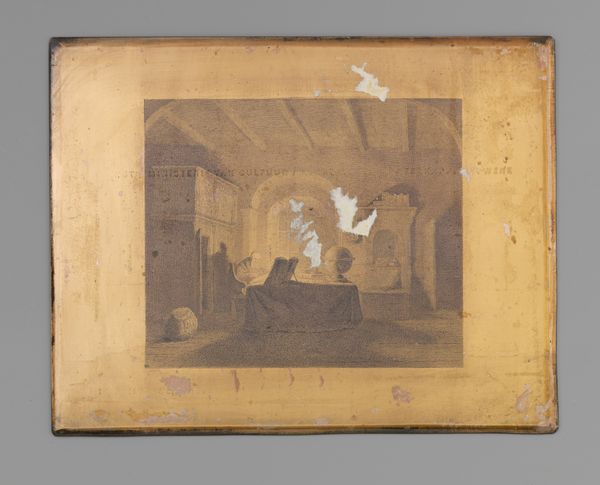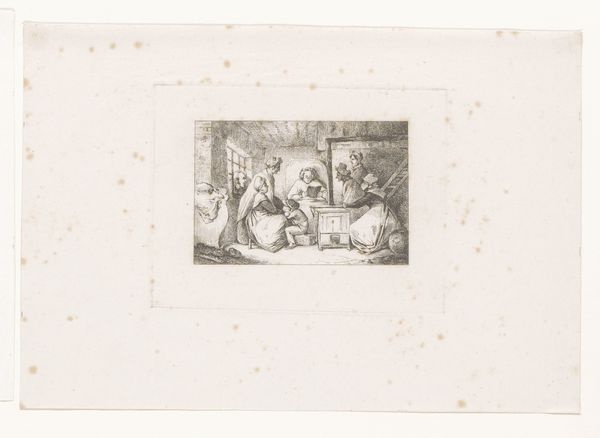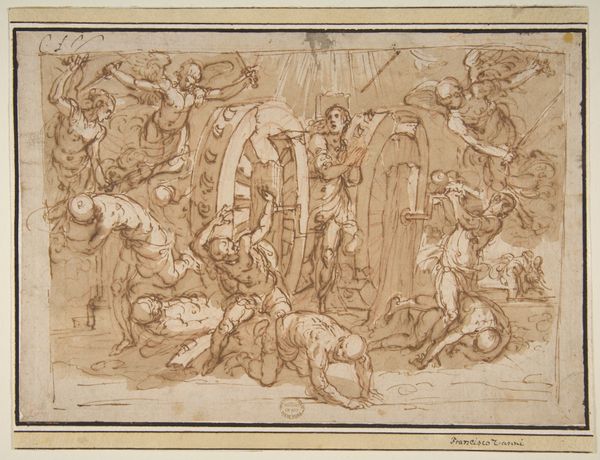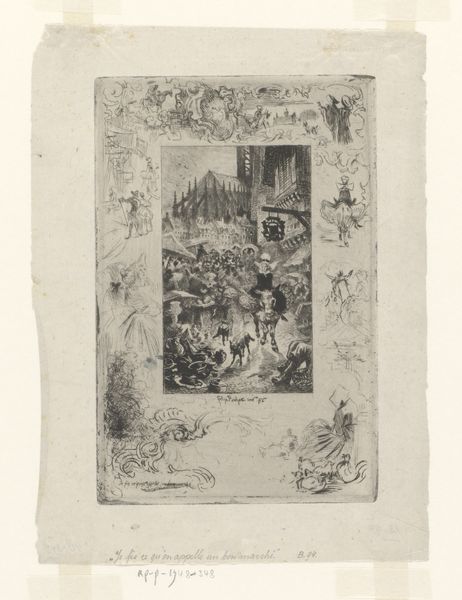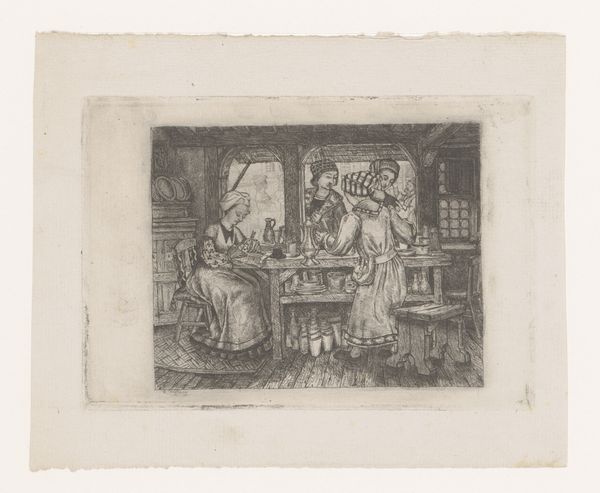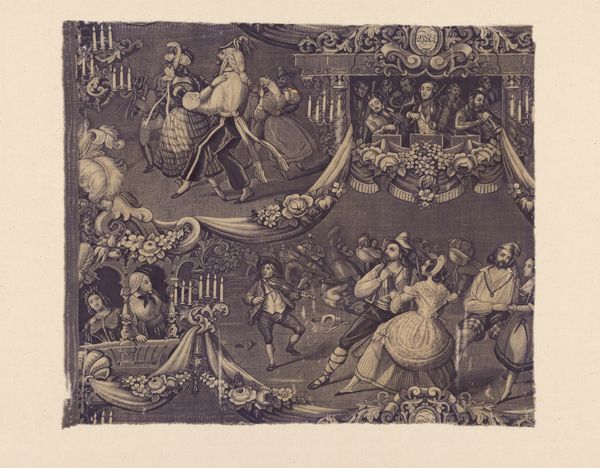
panel, tempera, painting
#
panel
#
narrative-art
#
tempera
#
painting
#
asian-art
#
landscape
#
figuration
#
orientalism
#
miniature
#
watercolor
Dimensions: length 41 cm, width 34 cm
Copyright: Rijks Museum: Open Domain
Editor: This is "Panel with figures on a fenced terrace near a pavillion", an anonymous tempera painting from around 1770 to 1775. It's a beautifully detailed scene; almost everything is in sepia tones. It seems to show daily life near a river, and the composition feels very carefully constructed, broken up into almost separate vignettes. What strikes you most about it from a formalist point of view? Curator: The strictly formal relations enacted within the plane create an intriguing dialogue. Notice the intricate latticework that defines spatial zones, seemingly a screen for implied perspectival regression. Are these discrete areas, or connected realms? Consider how the interplay between foreground and background contributes to the structural integrity of the image. Editor: So you are interested in the architecture, the planes, the arrangement of shapes, which work almost like geometric divisions on the flat surface of the panel? Curator: Precisely. The color, restrained as it is, invites exploration into how the medium itself informs the structure. Does the chosen color range—restricted primarily to brown and white hues—produce any tensions and cohesions, any implied depth? Is there anything else about the organization or the arrangement of this tempera painting which speaks to you? Editor: Well, the architecture certainly divides the pictorial space into defined segments, but perhaps that also helps draw the viewer's eye deeper into the painting. You can see something new each time you look. I originally took that spatial organisation at face value, but now I see that you read this arrangement in much greater depth. Curator: Yes, such details as linear perspective also help produce this three-dimensional painting; they produce and reinforce particular readings across the plane, not just as pictorial space but as a relational system of meanings, or suggestions thereof. These visual patterns can teach one to observe methodically and derive structure from the surface.
Comments
No comments
Be the first to comment and join the conversation on the ultimate creative platform.
